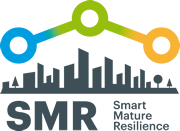Resources
PUBLICATIONS AND DOWNLOADS
Communication Platform
Date
30/11/2015
Author(s)
Tim A. Majchrzak, Mihoko Sakurai
Deliverable
D4.1
Lead Partner
CIEM, University of Agder
Delivery 4.1 is the first of four deliveries in Work Package 4 (WP4). The work package runs from month one to month 18 with a deliverable being due each six months. The overall goal is to build a collaborative environment in order to facilitate awareness and engagement among key partner in resilience building. Ultimately, this leads to the development of an integrated Resilience Information Portal, which will be used beyond WP4 for the remainder of the project. While the delivery is the first version of a communication platform, we accompany it with a report that summarizes the activities that were engaged so far, sketches the current plans, and gives an outlook how we intend to build the portal.
WP4 is heavily interlinked with other work packages. It draws from theoretic work (particularly from WP1), makes use of the workshops organized for the other WPs to get feedback on the portal and to conduct interviews, and will provide one of the five tools to be used in WP5. The work in WP4 is twofold: it has a domainspecific and a technological dimension. This is also reflected in the study of literature and related approaches. Besides, WP4 also has some connections to other EU Horizon 2020 projects; these links will be scrutinized in the future.
From the survey of existing approaches, it can be said that we face a problem grounded in the integration of resilience-related situation. Based on the literature review, we recognize infrastructure (and data about it), interface design, and data models as important design factors. It was also confirmed by the partner CITIES that a high number of Web-based systems exist that provide some form of integration of resilience-related information. In particular, some systems even seek to provide a basis for knowledge sharing. However, no information systems described in the literature, observed in actual use, or described by the CITIES closely resemble the objectives set out for WP4 as part of the Smart Mature Resilience (SMR) project.
For the initial set-up of the portal, we face a hen-egg situation: a portal is needed to facilitate discussion with the cities yet the portal needs to be based on the feedback from the cities. We have chosen a bootstrap approach to overcome this challenge by providing an initial set of requirements that we used to design the first prototype. It follows a top-down approach to model the general structure and a bottom-up approach to give one example for a detailed structure. Conceptually, we go for a portal of portals that serves as a gateway to the city portals, and a sophisticated role concept that takes care of access rights and data sovereignty. Technologically, we rely on Web technology and the commercially-graded Content Management System TYPO3.
To achieve our development goals, we have set out for an agile development process. It addresses the incremental and iterative nature in which we intend (and need to) work. In particularly, we will continuously integrate new ideas into the portal to immediately be able to gain feedback from the CITIES. Thereby, we will overcome most of the challenges of a short development time, unclear and possibly contradicting requirements, and a yet-to-be discovered outcome. The process will be fed with the results from a multitude of interviews with CITY representatives and target groups such as first responders. Most of these will be combined with the various workshops and meetings in the SMR project, starting with the January 2016 workshop in Bristol. Until then, we will also have finalized the guideline for interviews.
We conclude the report with an initial functional specification document, that has been designed as it is done in commercial software development projects. It can be seen as a synopsis our first ideas, findings from the literature, and results from initial work with the CITIES in form of functional and non-functional requirements.
A prototype of the portal is available here.

This project has received funding from the European Union’s Horizon 2020 research and innovation programme under grant agreement no. 653569.

